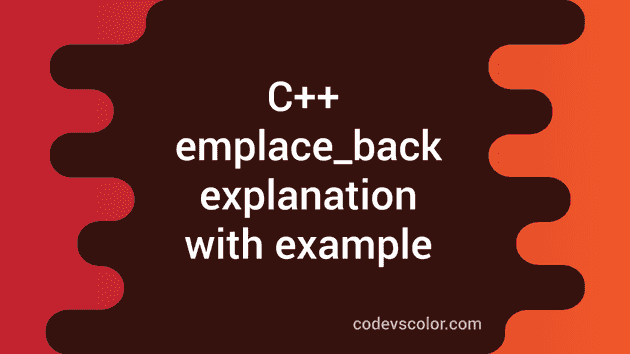emplace_back method in C++ explanation with example:
emplace_back is a public member function in std::vector. This method is used to insert one new element to the end of a vector.
In this post, we will learn how to use emplace_back method with examples.
What is emplace_back:
emplace_back is used to insert an element at the end of a vector, after the current last element. This is constructed and placed at the end. This construction is in-place.
It is defined as below:
void emplace_back (Args&&... args);Here, args is the arguments to construct the new element.
The arguments should be of same type. Else, it will throw an error.
Example program:
Let’s try with an example:
#include <vector>
#include <iostream>
using namespace std;
int main()
{
vector<int> intArray;
intArray.emplace_back(1);
intArray.emplace_back(0);
intArray.emplace_back(1);
intArray.emplace_back(0);
intArray.emplace_back(1);
for (auto& it : intArray) {
cout << it << ' ';
}
return 0;
}It will print:
1 0 1 0 1Example 2: emplace_back with a vector holding strings:
emplace_back works in a similar way with a vector holding strings. For example:
#include <vector>
#include <iostream>
using namespace std;
int main()
{
vector<string> strArray;
strArray.emplace_back("Hello");
strArray.emplace_back("World");
for (auto& it : strArray) {
cout << it << ' ';
}
return 0;
}It will print:
Hello World You might also like:
- How to run a C++ program in XCode in Mac
- C++ program to convert a decimal value to hexadecimal
- C++ find the sum of digits of a number until a single digit is obtained
- C++ program to find the nearest smaller number to the left side in an array
- C++ program to return an array from a function using a structure
- 3 ways to Compare two strings in C++ ignoring case

